More than meets the eye: the electromagnetic spectrum Understand article
Claudia Mignone and Rebecca Barnes take us on a tour through the electromagnetic spectrum and introduce us to the European Space Agency’s fleet of science missions, which are opening our eyes to a mysterious and hidden Universe.

We learn about the world around us via our senses. Our eyes play a major role, because light carries a great deal of information about its source and about the objects that either reflect or absorb it. Like most animals, humans have a visual system that collects luminous signals and relays them to the brain. Our eyes, however, are only sensitive to a very small portion of the spectrum of light – we are blind to anything but what we call ‘visible’ light.
Or are we? Over the course of the 19th century, scientists discovered and visualised several different types of previously invisible light: ultraviolet (UV) and infrared (IR) radiation, X-rays and gamma-rays, radio waves and microwaves. It soon became evident that visible light and these newly discovered forms of light were all manifestations of the same thing: electromagnetic (EM) radiation (see Figure 1).
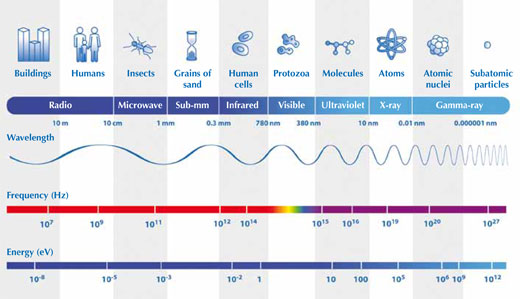
Image courtesy of ESA / AOES Medialab
The various types of EM radiation are distinguished by their energy: gamma-rays are the most energetic, followed by X-rays, UV, visible and IR light. Types of EM radiation with wavelengths longer than IR light are classed as radio waves. These are subdivided into sub-mm waves, microwaves and longer-wavelength radio waves. EM radiation propagates as waves that travel even in a vacuum. The energy (E) of the wave is related to its frequency (f): E = hf, where h is Planck’s constant, named after the German physicist Max Planck. The relationship between the frequency and wavelength (λ) of EM radiation is given by fλ = c, where c is the speed of light in a vacuum. These two relationships allow EM radiation to be described in terms not only of energy but also of frequency or wavelength.
Radiation at different energies (or frequencies, or wavelengths) is produced by different physical processes and can be detected in different ways – which is why, for example, UV light and radio waves have different applications in everyday life.
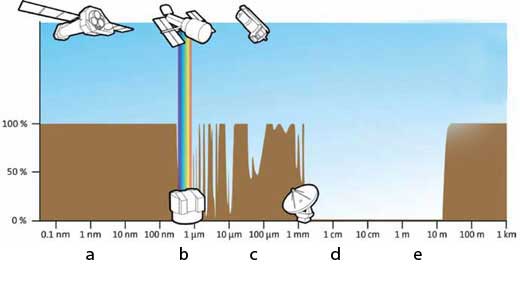
Image courtesy of ESA / Hubble / F Granato
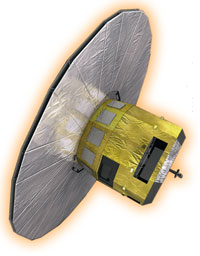
Towards the end of the 19th century, scientists began to investigate how this radiation from the cosmos could be captured to ‘see’ astronomical objects, such as stars and galaxies, in wavelengths beyond the visible range. First, however, they had to overcome the barrier of Earth’s atmosphere.
The atmosphere is, of course, transparent to visible light – this is why many animals evolved eyes that are sensitive to this part of the spectrum.
However, very little of the rest of the EM spectrum can penetrate the thick layers of our atmosphere (Figure 2).
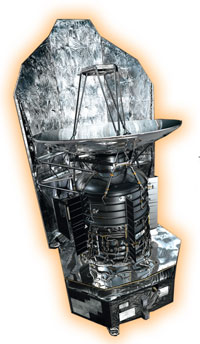
- Highly energetic gamma- and X-rays, with wavelengths as small as or smaller than atoms, are absorbed by oxygen and nitrogen in the upper atmosphere. This protects life on Earth from lethal radiation but makes the radiation difficult for astronomers to detect.
- Most but not all UV radiation is absorbed by oxygen and ozone in the upper atmosphere and stratosphere. To exploit what UV radiation does reach Earth, some animals have evolved eyes that can detect itw1.
- The shorter wavelengths of IR radiation can penetrate the atmosphere, but as its wavelength reaches one micrometre, IR radiation tends to be absorbed by water vapour and other molecules in the atmosphere.
- The same happens to sub-millimetre radiation – radio waves with wavelengths from a few hundred micrometres to about 1 millimetre – and to microwaves. They can be observed using ground-based facilities located in areas at high altitude with a particularly dry climate (as described by Mignone & Pierce-Price, 2010), or with balloon- and space-borne experiments.
- The atmosphere is transparent to mid-wavelength radio waves, which can easily be observed from the ground, but it blocks radio waves with wavelengths longer than ten metres.
More about ESA
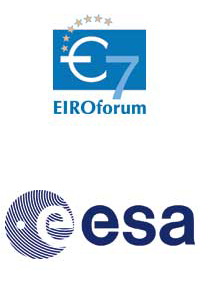
The European Space Agency (ESA)w2 is Europe’s gateway to space, organising programmes to find out more about Earth, its immediate space environment, our Solar System and the Universe, as well as to co-operate in the human exploration of space, develop satellite-based technologies and services, and to promote European industries.
The Directorate of Science and Robotic Exploration is devoted to ESA’s space science programme and to the robotic exploration of the Solar System. In the quest to understand the Universe, the stars and planets and the origins of life itself, ESA space science satellites peer into the depths of the cosmos and look at the furthest galaxies, study the Sun in unprecedented detail, and explore our planetary neighbours.
ESA is a member of EIROforumw5, the publisher of Science in School.
The opacity of the atmosphere is not the only challenge it poses for astronomers; its turbulence also impairs the quality of astronomical observations even at wavelengths that reach the ground, such as visible light. Faced with these problems, in the second half of the 20th century, following the birth of the space age, astronomers began to launch their telescopes beyond the atmosphere, into space. This started a revolution in astronomy comparable to the invention of the first telescope just over 400 years ago.
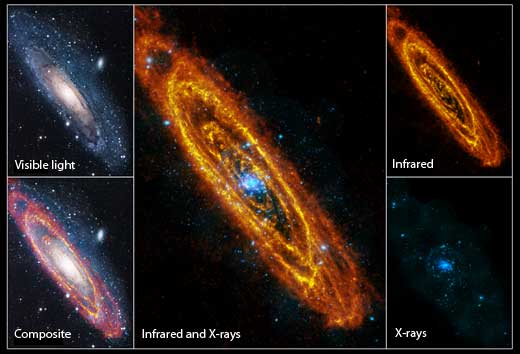
Images courtesy of Robert Gendler (visible light); ESA / Herschel / PACS / SPIRE / J Fritz, U Gent (infrared); ESA / XMM-Newton / EPIC / W Pietsch, MPE (X-rays)
Because different physical processes emit radiation at different wavelengths, cosmic sources shine brightly in one or more portions of the EM spectrum. By exploiting both ground- and space-based telescopes, therefore, astronomers today can combine observations from across the spectrum, which has produced a previously hidden and extremely captivating picture of the Universe (Figure 3 and Figure 4). Observations in the IR range, for instance, show the otherwise invisible mixture of dust and gas that fills interstellar spaces and from which new stars are born. By detecting gamma- and X-rays, astronomers can observe the most powerful phenomena in the Universe, such as black holes devouring matter and supernova explosions.
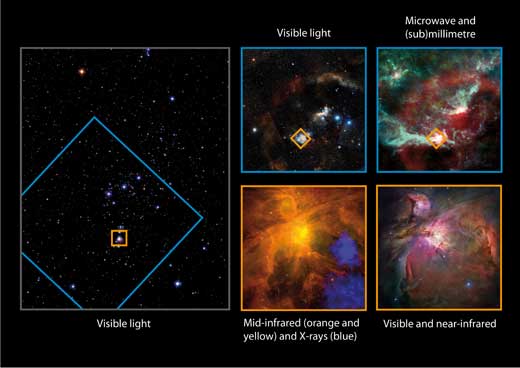
Images courtesy of ESA / AOES Medialab (overall composition); Kosmas Gazeas (visible light, large image); STScI-DSS (visible light, small image); ESA, LFI & HFI Consortia (microwave and (sub)millimetre); AAAS / Science, ESA XMM-Newton and NASA Spitzer data (mid-infrared and X-rays); NASA, ESA, M Robberto (Space Telescope Science Institute / ESA) and the Hubble Space Telescope Orion Treasury Project Team (visible and near-infrared)
Looking to the heavens: ground-based astronomy

Complementary to ESA’s space telescopes are the ground-based telescopes of the European Southern Observatory (ESO)w4. To minimise distortion of the results by Earth’s atmosphere, ESO operates telescopes at sites in northern Chile, which are among the best locations in the southern hemisphere for astronomical observations because of their high altitude and dry atmosphere.
Like ESA, ESO makes observations in different parts of the EM spectrum. ESO’s Very Large Telescope (VLT) is the world’s most advanced visible-light and infrared telescope, consisting of four 8.2 m diameter telescopes and four smaller telescopes, which can work together as an interferometer to enable observations in even greater detail. Still being built in the Atacama desert is ALMA, the largest ground-based astronomy project in existence. The result of a collaboration between ESO and international partners, ALMA will detect millimetre and sub-millimetre radiation, allowing astronomers to observe some of the coldest and most distant objects in the Universe with much better resolution and sensitivity than is presently possible (Mignone & Pierce-Price, 2010).
ESO is a member of EIROforumw5, the publisher of Science in School.
Probing the cosmos across the EM spectrum is one of the scientific objectives of the European Space Agency (ESA; see box)w2, which currently has five missions in operation that are dedicated to astronomy (see Figure 5). In order of increasing energies, they are Planck (sub-millimetre and microwaves), Herschel (IR), Hubble Space Telescope (visible, as well as some IR and UV wavelengths), XMM-Newton (X-rays), and INTEGRAL (gamma and X-rays)w3.
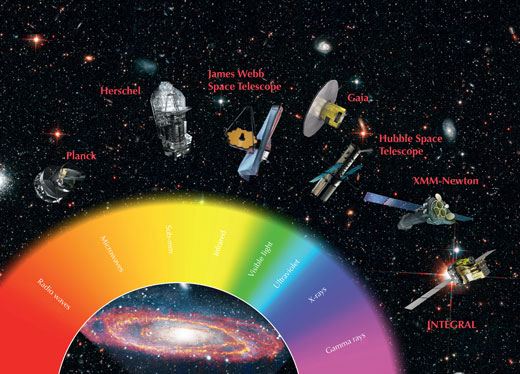
Image courtesy of ESA
In future Science in School articles, we will explore the EM spectrum in greater detail with help from ESA’s fleet of past and present space telescopes, which have contributed to reshaping our understanding of the Universe.
References
- Mignone C, Pierce-Price D (2010) The ALMA Observatory: the sky is only one step away. Science in School 15: 44-49. www.scienceinschool.org/2010/issue15/alma
Web References
- w1 – Unlike humans, some animals are able to see UV light.
- To learn how researchers at the University of Bristol, UK, are investigating how birds can see UV light, and what evolutionary benefits it offers them, see: www.bristol.ac.uk/biology/research/behaviour/vision/4d.html
- Pickrell J (2003) Urine vision? How rodents communicate with UV light. National Geographic News. See: http://news.nationalgeographic.com or use the direct link: http://tinyurl.com/urinevision
- Bats scan the rainforest with UV-eyes. Science Daily. See: www.sciencedaily.com/releases/2003/10/031017073642.htm
- How does a bee perceive flowers? See: www.naturfotograf.com/UV_flowers_list.html
- w2 – For more information about ESA, see: www.esa.int
- To learn more about the activities of ESA’s Directorate of Science and Robotic Exploration, visit: www.esa.int/esaSC
- w3 – For a spectacular view of the many different ‘colours’ of the Andromeda galaxy, as probed across the EM spectrum by various ESA missions, see: www.esa.int/export/esaSC/SEM5IUYGRMG_index_0.html
- w4 – ESO is the world’s most productive astronomical observatory, with its headquarters in Garching near Munich, Germany, and its telescopes in Chile. To learn more about ESO, the VLT, ALMA and other ESO facilities, see: www.eso.org
- w5 – To find out more about EIROforum, see: www.eiroforum.org
Resources
- The Science@ESA vodcasts explore our Universe through the eyes of ESA’s fleet of science spacecraft. Episode 1 (‘The full spectrum’) examines why we need to send telescopes into space and what they can tell us about the Universe. See: http://sci.esa.int/vodcast
- To learn more about Earth’s atmosphere and the role – and loss – of ozone, see:
- Harrison T, Shallcross D (2010) A hole in the sky. Science in School 17: 46-53. www.scienceinschool.org/2010/issue17/ozone
- To see how physics teacher Alessio Bernadelli inspired his students about the EM spectrum by getting them to produce their own TV show on the subject, see Alessio’s blog (http://alessiobernardelli.wordpress.com) or use the direct link: http://tinyurl.com/42ow4a9
- To find out how the wavelength at which a celestial object emits most of its light is related to the object’s temperature, see: http://sci.esa.int/jump.cfm?oid=48986
- ESA has produced a wide range of freely available educational materials to support teachers in the classroom, which include printed materials, DVDs and online videos, teaching kits and websites. To see the full list, visit: www.esa.int/educationmaterials
- To find out about all ESA education activities, see: www.esa.int/education
Institutions
Review
This article presents the reader with applications of the electromagnetic spectrum that are not usually considered when tackling this topic. Furthermore, it provides opportunities for teachers to engage their students and motivate further research into this fascinating topic.
The ESA vodcasts mentioned in the resource section are excellent material to engage learners in the topic of EM radiation. Teachers can also subscribe to receive the latest vodcasts.
Possible comprehension and extension questions include:
- What type of waves are electromagnetic radiation? Transverse or longitudinal?
- Give examples of types of electromagnetic radiation with higher and lower frequencies than visible light.
- Describe some technological applications of light and radio waves.
- Do you think pollution affects the amount of radiation detected? Give reasons for your answer.
- Name one detrimental effect of UV light when it is not stopped by ozone in upper atmospheric layers.
- What is a major hindrance in the effective use of terrestrial telescopes?
We normally associate the launch of astronomical telescopes with NASA. This article, however, makes it clear that Europe is also actively studying the skies – which should bring the topic closer to home for European students, and makes the science more relevant to them.
Angela Charles, Malta





